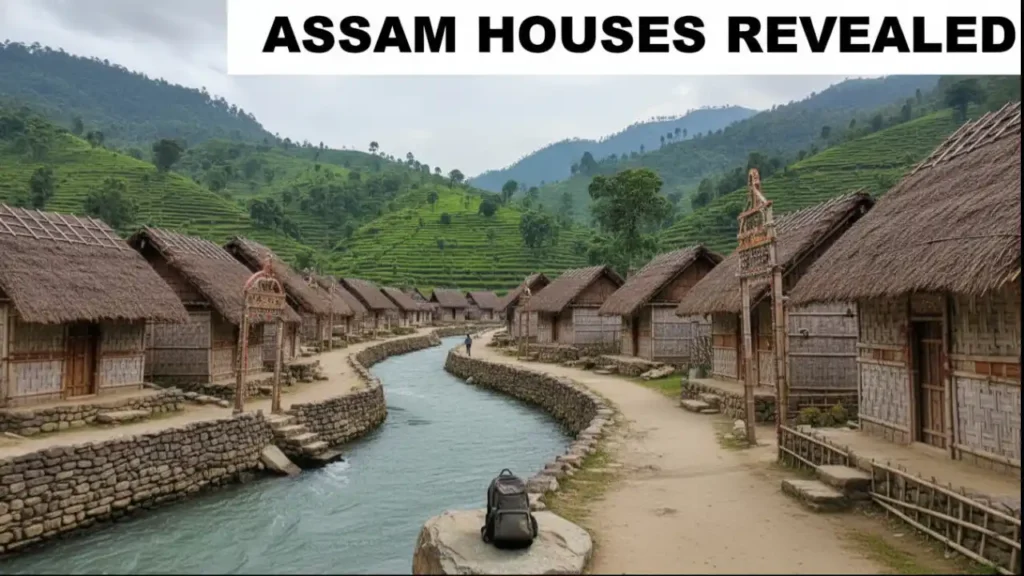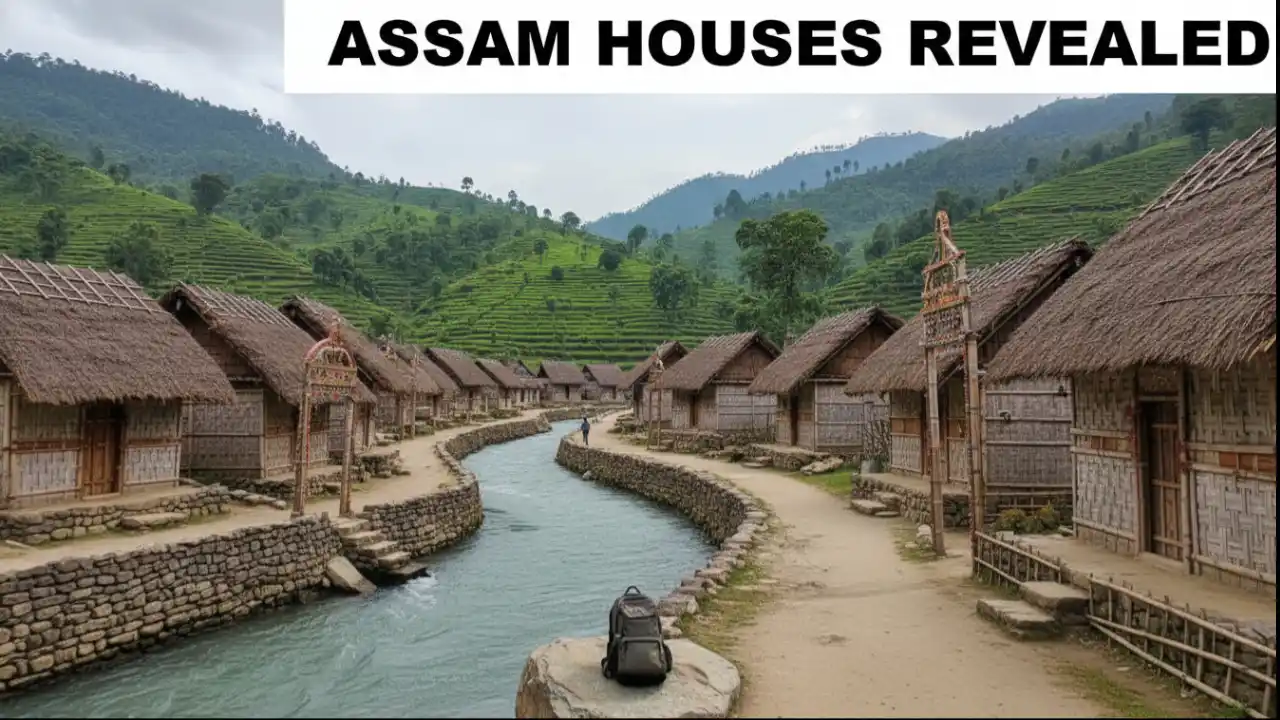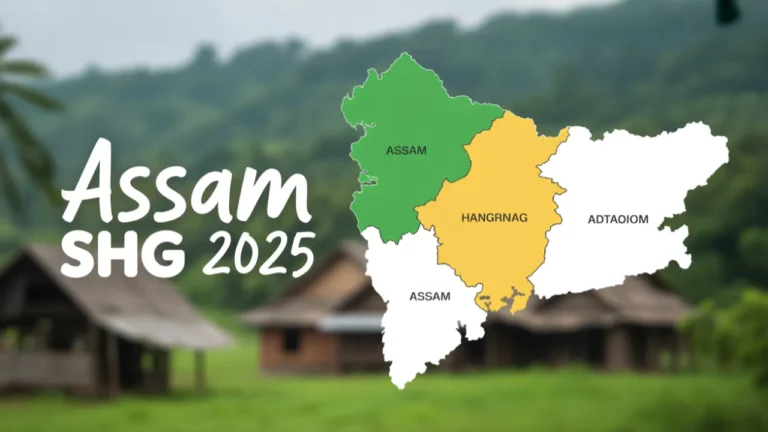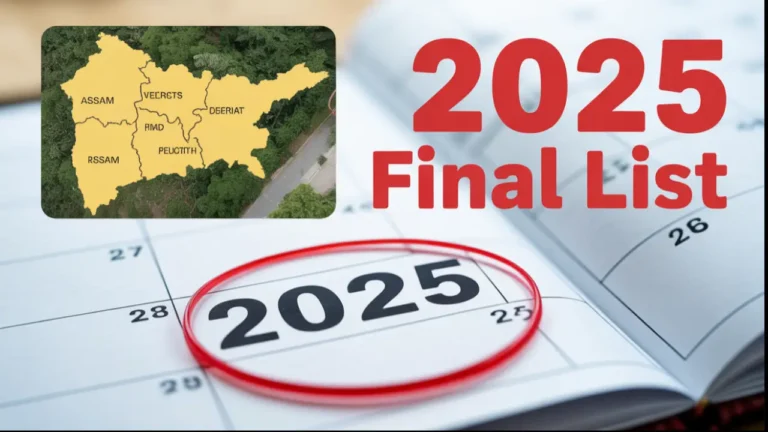GEO Tag House List 2025 Assam: A Complete Process Step by Step to PMAY-G Status and Geo-Tagging Lists 2025
The housing landscape in Assam has undergone a massive digital transformation, with the concept of geo-tagging playing a central and critical role in the transparent and efficient implementation of government housing schemes.
If you’re a resident of Assam looking to check your house status, your application under the Pradhan Mantri Awas Yojana-Gramin (PMAY-G), or the latest GEO Tag House List 2025 Assam, this comprehensive guide will walk you through the entire online process and explain the significance of this digital initiative.

Geo-Tagging in Assam
Geo-tagging is the process of appending geographic identification data, such as latitude and longitude coordinates, to a photograph or digital media. In the context of government housing schemes like PMAY-G, it serves as a powerful tool for transparency, monitoring, and verification.
Purpose of Geo-Tagging
Geo-tagging ensures that:
- Funds are utilised correctly: The process requires officials (or in Assam’s innovative approach, trained Self-Help Group members/Jeevika Sakhis) to visit the actual site of the house, take a geo-tagged photograph at various stages (plinth level, roof level, completion), and upload it to the central server. This provides irrefutable, time-stamped, and location-verified proof of construction progress.
- Preventing Misuse: It eliminates the possibility of funds being diverted or claimed for a non-existent or ineligible house.
- Authenticating Beneficiaries: For new lists, the geo-tagging of existing ‘kutcha’ (temporary) houses is the primary method used to verify the eligibility of applicants who were previously missed in surveys, ensuring only the most deserving families receive the benefit.
- Streamlining Monitoring: Government bodies at the Block, District, and State levels can monitor the progress of thousands of houses remotely via a dashboard, significantly speeding up project completion and fund disbursement.
Geo-Tag House List 2025 Assam
The term “Geo-Tag House List 2025 Assam” primarily refers to the final, verified list of beneficiaries under the PMAY-G and PMAY-U schemes, whose housing locations have been successfully geo-tagged by the government-mandated personnel or through the new self-geo-tagging system.
In a major step towards ensuring all eligible families are covered, the Assam government, as of early 2025, announced a significant revamp of the geo-tagging process. Key highlights of this drive include:
- Allocation of Houses: The state was allocated a substantial number of new houses (e.g., 3.80 lakh) under PMAY-G for the ongoing cycle.
- Empowerment of SHGs: Assam became one of the first states to involve ‘Jeevika Sakhis’ (women from Self-Help Groups) from neighbouring villages to conduct the preliminary geo-tagging of kutcha houses. This decentralizes the process and ensures a more localized, fair assessment.
- Self-Geo-Tagging Option: To prevent any eligible family from being left out, a crucial provision for self-geo-tagging was introduced. Beneficiaries can use a mobile app to take a geo-tagged photograph of their house and submit it, which is then followed by official verification.
- Multi-Stage Verification: The finalized list from the geo-tagging exercise must pass through multiple layers of approval: the Gram Sabha (Village Council), the Block-Level Committee, and finally the District-Level Committee (often headed by the Guardian Minister) before being forwarded to the Central Government and published as the official list.
How to Check Your Geo-Tag House Status Online in Assam (PMAY-G)
Since the geo-tagging process is intrinsically linked to PMAY-G and PMAY-U, the status check is performed on the respective official national portals, which host the data uploaded by the Assam State government.
Method 1: Checking the Beneficiary List (The Geo-Tag List)
This method allows you to check if your name, or the name of a beneficiary, appears in the final geo-tagged list for the allocation of houses.
- Access the Official PMAY-G Portal: Navigate to the dedicated reporting portal for PMAY-G, which is the repository for the state-wise beneficiary data. The official link often redirects to the rhreporting.nic.in portal.
- Select the ‘Reports’ Section: Look for the “Awaassoft” menu option on the main page, and then click on “Report” from the dropdown.
- Go to Social Audit Reports: On the Reports page, find the section titled “Social Audit Reports” and click on the option “Beneficiary details for verification” (often labeled as F.3.
- Filter for Assam State: On the MIS Report page, you must carefully fill out the following details:
- Select State: Choose “Assam”.
- Select District, Block, and Village: Select your respective administrative units.
- Select Financial Year: Choose the current or relevant financial year, such as ‘2024-2025’.
- Select Scheme: Choose ‘Pradhan Mantri Awas Yojana Gramin (PMAY-G)’.
- View the List: Enter the Captcha code shown and click “Submit”. The system will generate a comprehensive list of all verified beneficiaries (the geo-tagged houses) for that specific village/Gram Panchayat.
Method 2: Tracking Your Individual Status via Registration Number
If you have already applied and have a registration number, you can track the progress of your application, including the geo-tagging status, directly.
- Visit the PMAY-G Portal: Go to the official PMAY-G portal.
- Use the Stakeholders Option: Click on the “Stakeholders” tab/option.
- Select Beneficiary Option: From the dropdown, select “IAY/PMAYG Beneficiary”.
- Enter Registration Number: Enter your unique PMAY-G Registration Number (typically a lengthy alphanumeric code).
- Check Status: Click “Submit”. This will display your detailed status, including the application approval, stage of geo-tagging (e.g., ‘Geo-tagging done at foundation level’), and the release of subsequent financial instalments.
PMAY-Urban Geo-Tagging Check (For City/Town Areas)
If your house falls under a city or town area, the scheme is PMAY-Urban. Geo-tagging here is often related to the Beneficiary Led Construction (BLC) component.
The status can be checked using your Assessment ID or Application ID on the PMAY-Urban official portal, typically under the “Track Your Assessment Status” section. This allows you to monitor the progress, which is often tied to geo-tagged verification reports uploaded by municipal officials.
Geo-Tagging: The Cornerstone of Transparency and Accountability
The Assam government’s emphasis on geo-tagging and its innovative decision to involve local women’s groups in the verification process highlights a major commitment to digital governance and social audit. Geo-tagging is not just a technical formality; it is a guarantee of accountability that ensures central and state funds reach the actual, deserving beneficiaries in the rural and urban areas of Assam.
For citizens, mastering the online process to check their status on the official PMAY-G and PMAY-Urban portals is the key to staying updated on their housing benefits for the year 2025 and beyond.
Why Geo-Tagging is Essential for Future House Allotments
The mandatory nature of geo-tagging has a profound impact on future government schemes. It creates a robust, reliable database of housing assets and beneficiary locations. Any house that has not been properly geo-tagged and verified by the authorized personnel or system will not be eligible to receive further instalments or even be sanctioned in the first place. This rigorous process is designed to create a leak-proof delivery system, making the geo-tagged list the only official record of sanctioned housing in the state.
Conclusion
If you face any issues while checking the geo tag check house online Assam status, or if your name is missing from the list despite being eligible, the first point of contact should always be your local Gram Panchayat Office or the Block Development Office (BDO). They are responsible for implementing the scheme locally and have direct access to the AWAS+ app and rhreporting portal data. For persistent issues, the respective District Rural Development Agency (DRDA) or the State Department of Panchayat & Rural Development are the final authorities. Always verify the portal address to avoid fraudulent websites.
F.A.Q.
– What is geo-tagging for houses in Assam?
It’s a process of taking GPS-linked photos of a PMAY-G house at different construction stages to track progress and prevent fraud.
– How can I check my geo tag status online?
Visit the PMAY-G website (pmayg.nic.in), go to ‘Reports’, and search using your location details (district, block, panchayat) to find your status.
– What if my name is missing from the list?
Contact your local Gram Panchayat office first to verify your application status and details.
– Why is geo-tagging mandatory?
It’s directly linked to fund release. Each verified construction stage triggers the next installment payment.
Also read:-






